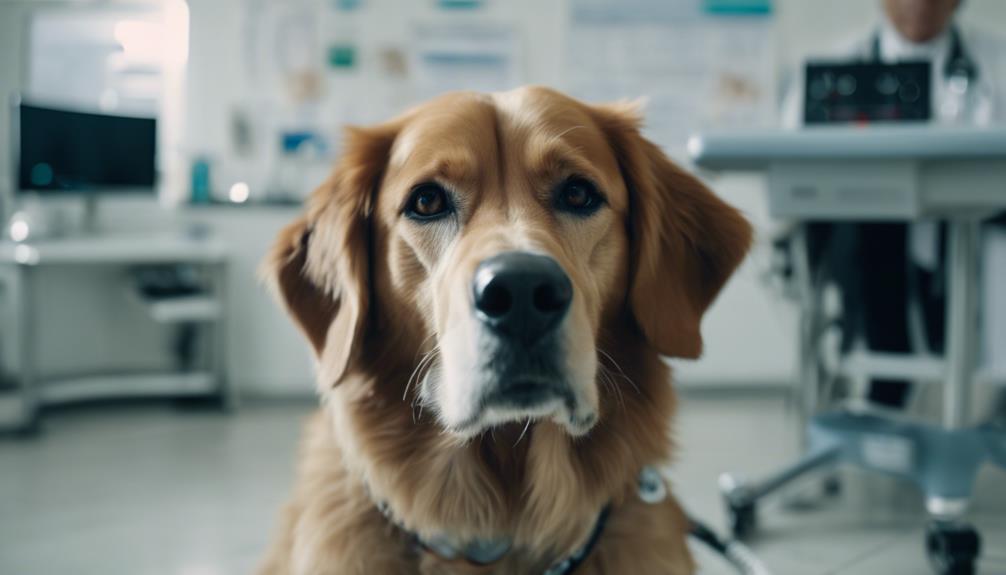When considering the health landscape of this breed, several prevalent issues warrant attention, including orthopedic conditions such as hip dysplasia and intervertebral disc disease, which can significantly impact mobility. Additionally, the tendency for obesity, coupled with a range of ocular and dermatological concerns, underscores the importance of proactive care. Heart issues, dental complications, and respiratory conditions further complicate their health profile. Understanding these common health challenges is essential for effective management and prevention strategies, prompting a closer examination of the factors contributing to these conditions. What other aspects should be taken into account?
Hip Dysplasia

Hip dysplasia is a prevalent orthopedic condition in this breed, characterized by the improper formation of the hip joint that can lead to arthritis and mobility issues.
Genetic factors play a significant role in its development, with certain breeds being more susceptible than others.
Symptoms often include difficulty walking, reluctance to run or jump, and signs of discomfort.
Early diagnosis is crucial for effective symptom management, which may involve weight control, physical therapy, and medications to reduce pain and inflammation.
In severe cases, surgical options may be considered.
Regular veterinary check-ups can help monitor the condition and adjust treatment plans as necessary.
Understanding hip dysplasia is essential for maintaining the health and well-being of affected dogs.
Intervertebral Disc Disease
Intervertebral Disc Disease (IVDD) is a serious condition that affects the spine, leading to pain, neurological deficits, and mobility challenges in this breed.
This disease occurs when the discs between the vertebrae degenerate or become herniated, pressing on the spinal cord. Diagnostic imaging, such as X-rays or MRIs, is crucial for identifying the extent of the damage and guiding treatment.
Treatment options often include conservative management like physical therapy and pain relief medications. However, in severe cases, surgical options may be necessary to alleviate pressure on the spinal cord and restore mobility.
Early diagnosis and intervention are key to improving outcomes for affected animals, making it essential for owners to recognize potential symptoms and seek veterinary care promptly.
Obesity Risks

Obesity is a significant health concern that can arise from various causes, including overeating and lack of exercise.
Understanding the factors that contribute to weight gain is essential for effective prevention strategies, which can help maintain a healthy lifestyle for this breed.
Causes of Obesity
Excessive caloric intake combined with a lack of physical activity significantly increases the risk of obesity in this breed.
Several factors contribute to this condition, including poor dietary management and insufficient exercise routines. When pets consume more calories than they expend, the surplus is stored as fat, leading to weight gain.
Additionally, a sedentary lifestyle can exacerbate this issue, as many owners may not engage their pets in regular physical activities.
It's important to note that certain breeds may have a predisposition to obesity, making awareness even more crucial.
Prevention Strategies
Implementing effective prevention strategies can significantly reduce the risk of obesity in this breed, addressing both dietary habits and physical activity levels.
First, consider nutrition tips such as providing balanced meals with appropriate portion sizes. Avoid high-calorie treats and focus on nutrient-rich foods.
Secondly, establish regular exercise routines tailored to the breed's needs. Activities like daily walks, play sessions, and agility training can promote a healthy weight.
Additionally, monitor your pet's weight regularly to catch any changes early. Engaging them mentally through training exercises also helps keep them active.
Eye Conditions
What are some common eye conditions that can affect this breed, and how can they impact overall health and vision? Eye issues, such as retinal degeneration and cataract formation, can significantly hinder a pet's quality of life. These conditions may lead to vision loss, affecting their ability to navigate their environment safely.
- Retinal Degeneration: Progressive loss of vision over time.
- Cataract Formation: Clouding of the lens, leading to blurred vision.
- Glaucoma: Increased pressure in the eye, causing pain and potential blindness.
- Entropion: Eyelids roll inward, which can irritate the eye surface.
Regular veterinary check-ups are essential for early detection and management of these conditions.
Skin Allergies

Skin allergies are a prevalent concern in this breed, often manifesting as itching, redness, and inflammation that can lead to significant discomfort and secondary infections.
These allergies can arise from various sources, primarily food sensitivities and environmental triggers. Common food sensitivities include specific proteins or grains that can cause adverse reactions, leading to skin issues. Meanwhile, environmental triggers such as pollen, dust mites, and mold can also provoke allergic responses.
To manage these allergies effectively, pet owners should consult with a veterinarian for proper diagnosis and treatment options. This may involve dietary adjustments or allergy testing.
Regular grooming and maintaining a clean living environment can further help minimize exposure to allergens, ensuring the health and comfort of the affected breed.
Dental Issues
Dental issues are a common health concern in this breed, often leading to complications such as periodontal disease, tooth loss, and discomfort if not addressed promptly. Poor dental hygiene can result in tooth decay and gum disease, which can significantly affect overall health.
Regular veterinary check-ups and proper dental care are essential to prevent these problems. Awareness of these dental issues and their implications ensures that owners can take proactive steps to maintain their pet's oral health and overall well-being.
- Regular brushing helps reduce plaque buildup.
- Dental treats can support oral health.
- Routine veterinary dental cleanings are important.
- Watch for signs of bad breath or difficulty eating.
Heart Problems

Heart problems can significantly affect the health of this breed, with two notable conditions being congenital heart defects and heartworm disease risks.
Congenital heart defects are often present at birth and can lead to serious complications if not monitored.
Additionally, heartworm disease, caused by parasites transmitted through mosquito bites, poses a significant risk and can lead to severe heart damage if left untreated.
Congenital Heart Defects
Congenital heart defects are a significant concern in this breed, often leading to serious health complications that require early diagnosis and intervention. These defects can arise from a genetic predisposition, making it essential for breeders and owners to be vigilant. Regular congenital heart screening can help detect these issues early, allowing for timely treatment.
Understanding the potential risks associated with congenital heart defects is crucial. These include:
- Potential for decreased lifespan
- Risk of heart failure
- Symptoms may include lethargy and coughing
- Importance of genetic testing in breeding
Heartworm Disease Risks
The risk of heartworm disease poses a significant threat to this breed's overall health, necessitating vigilant preventive measures and regular testing. Heartworms are parasites transmitted through mosquito bites, leading to serious heart and lung problems.
Effective heartworm prevention is crucial; owners should administer monthly preventative medications to protect their pets.
Signs of heartworm infection can be subtle, including coughing and lethargy, which may worsen over time. If diagnosed, treatment options are available, but they can be complex and costly.
To ensure your pet's well-being, schedule annual heartworm tests and consult with a veterinarian about the best prevention methods. Maintaining awareness and acting promptly can help safeguard this breed against the dangers of heartworm disease.
Ear Infections
Ear infections are a prevalent health concern in this breed, often resulting from anatomical predispositions and environmental factors.
Maintaining proper ear hygiene is crucial for infection prevention. Regular cleaning and monitoring can help reduce the risk of these infections significantly.
Here are some key points to consider:
- Regularly check your dog's ears for dirt or wax buildup.
- Use vet-recommended cleaning solutions to clean ears safely.
- Monitor for signs of infection, such as redness or foul odor.
- Keep ears dry, especially after baths or swimming.
Respiratory Concerns

Numerous respiratory concerns can affect this breed, often stemming from their unique anatomical features and environmental exposures. Many individuals may experience breathing difficulties due to their short snouts, which can lead to airway obstruction. This condition may cause snoring, wheezing, or labored breathing, especially during exercise or in hot weather.
Other factors contributing to respiratory issues include obesity, allergies, and respiratory infections. Pet owners should be vigilant for signs of distress, such as excessive panting or lethargy. Regular veterinary check-ups are essential for early detection and management of these problems.
Maintaining a healthy weight and avoiding environmental irritants can significantly improve the quality of life for this breed. Addressing respiratory concerns promptly is crucial for their overall well-being.

